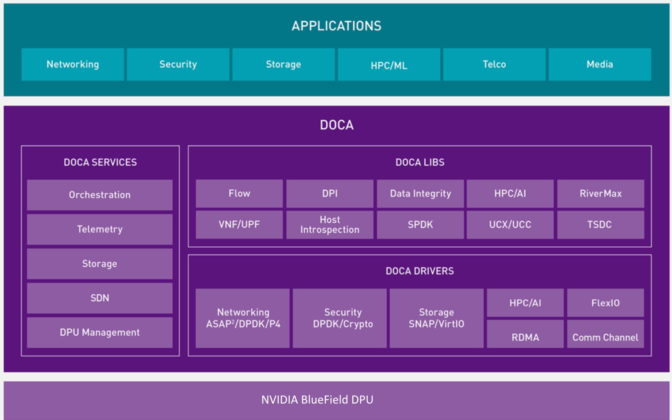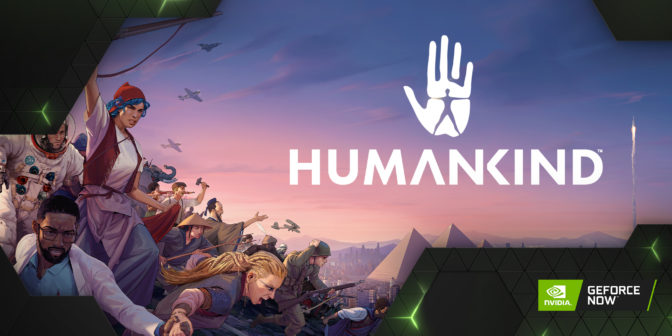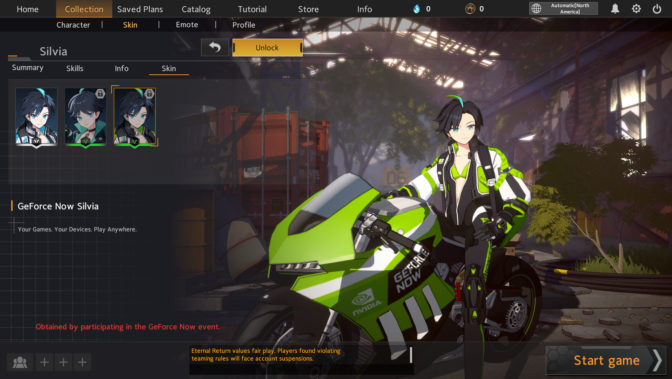New voice for Alexa’s Reading Sidekick feature avoids the instabilities common to models with variable prosody.Read More
Applying PECOS to product retrieval and text autocompletion
Two KDD papers demonstrate the power and flexibility of Amazon’s framework for “extreme multilabel ranking”.Read More
The range of AWS’s speech research is on display at Interspeech
Katrin Kirchhoff, director of speech processing for Amazon Web Services, on the many scientific challenges her teams are tackling.Read More
Allie K. Miller wants to help others understand artificial intelligence
Amazon’s machine learning leader for startups is also working to include more underrepresented groups in the workforce.Read More
These researchers are bringing AI to farmers
“Farmers feed the entire world — so how might we support them to be resilient and build sustainable systems that also support global food security?” It’s a question that Diana Akrong found herself asking last year. Diana is a UX researcher based in Accra, Ghana, and the founding member of Google’s Accra UX team.
Across the world, her manager Dr. Courtney Heldreth, was equally interested in answering this question. Courtney is a social psychologist and a staff UX researcher based in Seattle, and both women work as part of Google’s People + Artificial Intelligence Research (PAIR) group. “Looking back on history, we can see how the industrial revolution played a significant role in creating global inequality,” she says. “It set most of Western Europe onto a path of economic dominance that was then followed by both military and political dominance.” Courtney and Diana teamed up on an exploratory effort focused on how AI can help better the lives of small, local farming communities in the Global South. They and their team want to understand what farmers need, their practices, value systems, what their social lives are like — and make sure that Google products reflect these dynamics.
One result of their work is a recently published research paper. The paper — written alongside their colleagues Dr. Jess Holbrook at Google and Dr. Norman Makoto Su of Indiana University and published in the ACM Interactions trade journal — dives into why we need farmer-centered AI research, and what it could mean not just for farmers, but for everyone they feed. I recently took some time to learn more about their work.
How would you explain your job to someone who isn’t in tech?
Courtney: I would say I’m a researcher trying to understand underserved and historically marginalized users’ lives and needs so we can create products that work better for them.
Diana: I’m a researcher who looks at how people interact with technology. My superpower is my curiosity and it’s my mission to understand and advocate for user needs, explore business opportunities and share knowledge.
What’s something on your mind right now?
Diana: Because of COVID-19, there’s the threat of a major food crisis in India and elsewhere. We’re wondering how we can work with small farms as well as local consumers, policymakers, agricultural workers, agribusiness owners and NGOs to solve this problem.
Agriculture is very close to my heart, personally. Prior to joining Google, I spent a lot of time learning from smallholder farmers across my country and helping design concepts to address their needs.
“Farmers feed the entire world — so how might we support them to be resilient and build sustainable systems that also support global food security?”Diana Akrong
UX researcher, Google
Courtney: I’ve been thinking about how AI can be seen as this magical, heroic thing, but there are also many risks to using it in places where there aren’t laws to protect people. When I think about Google’s AI Principles — be socially beneficial, be accountable to people, avoid reinforcing bias, prioritize safety — those things define what projects I want to work on. It’s also why my colleague Tabitha Yong and I developed a set of best practices for designing more equitable AI products.
Can you tell me more about your paper, “What Does AI Mean for Smallholder Farmers? A Proposal for Farmer-Centered AI Research,” recently published in ACM Interactions?
Courtney: The impact and failures of AI are often very western and U.S.-centric. We’re trying to think about how to make this more fair and inclusive for communities with different needs around the globe. For example, in our farmer-centered AI research, we know that most existing AI solutions are designed for large farms in the developed world. However, many farmers in the Global South live and work in rural areas, which trail behind urban areas in terms of connectivity and digital adoption. By focusing on the daily realities of these farmers, we can better understand different perspectives, especially those of people who don’t live in the U.S. and Europe, so that Google’s products work for everyone, everywhere.
-
Courtney is on the left of a giant billboard at the CGIAR Platform for Big Data in Agriculture summit in 2019 and Diana is on the right side of the same sign.
In 2019, Courtney and Diana led a workshop at the CGIAR Platform for Big Data in Agriculture summit; Courtney also participated in a panel discussion. In 2020, Diana spoke at a virtual CGIAR panel on human-centered design.
-
Diana on the left and Courtney on the right are smiling and hugging each other.
Diana (left) and Courtney (right) are dedicated to building inclusive AI for farmers with small rural businesses in Africa and Asia. Diana is based in Accra, Ghana and Courtney is based in Seattle, Washington in the U.S.
-
Courtney is pictured on a research trip to India, looking out of a latticed window with a beautiful traditional Indian dress and earrings.
Courtney pictured here during a research trip to India.
-
Diana is smiling and wearing an apron for a team building exercise.
Diana is all smiles at a team building event.
Why did you want to work at Google?
Diana: I see Google as home to teams with diverse experiences and skills who work collaboratively to tackle complex, important issues that change real people’s lives. I’ve thrived here because I get to work on projects I care about and play a critical role in growing the UX community here in Ghana.
Courtney: I chose Google because we work on the world’s hardest problems. Googlers are fearless and the reach of Google’s products and services is unprecedented. As someone who comes from an underrepresented group, I never thought I would work here. To be here at this moment is so important to me, my community and my family. When I look at issues I care about the most — marginalized and underrepresented communities — the work we do plays a critical role in preventing algorithmic bias, bridging the digital divide and lessening these inequalities.
How have you seen your research help real people?
Courtney: In 2018, we worked with Titi Akinsanmi, Google’s Policy and Government Relations Lead for West and Francophone Africa, and PAIR Co-lead and Principal Research Scientist Fernanda Viegas on the report for AI in Nigeria. Since then, the Ministry of Technology and Science reached out to Google to help form a strategy around AI. We’ve seen government bodies in sub-Saharan Africa use this paper as a roadmap to develop their own responsible AI policies.
How should aspiring AI thinkers and future technologists prepare for a career in this field?
Diana: My main advice? Start with people and their needs. A digital solution or AI may not be necessary to solve every problem. The PAIR Guidebook is a great reference for best practices and examples for designing with AI.
Alexandre Bayen is a driving force behind mixed-autonomy traffic
Coordinated automation could improve traffic flow, boost efficiency, and slash emissions. A combination of machine learning, big data, and Amazon Web Services is making this future possible.Read More
How to train large graph neural networks efficiently
New method enables two- to 14-fold speedups over best-performing predecessors.Read More
‘Think a lot, and think big’
How Minghui He turned her Amazon internship into a full-time research scientist role.Read More
Inside the DPU: Talk Describes an Engine Powering Data Center Networks
The tech world this week gets its first look under the hood of the NVIDIA BlueField data processing unit. The chip invented the category of the DPU last year, and it’s already being embraced by cloud services, supercomputers and many OEMs and software partners.
Idan Burstein, a principal architect leading our Israel-based BlueField design team, will describe the DPU’s architecture at Hot Chips, an annual conference that draws many of the world’s top microprocessor designers.
The talk will unveil a silicon engine for accelerating modern data centers. It’s an array of hardware accelerators and general-purpose Arm cores that speed networking, security and storage jobs.
Those jobs include virtualizing data center hardware while securing and smoothing the flow of network traffic. It’s work that involves accelerating in hardware a growing alphabet soup of tasks fundamental to running a data center, such as:
- IPsec, TLS, AES-GCM, RegEx and Public Key Acceleration for security
- NVMe-oF, RAID and GPUDirect Storage for storage
- RDMA, RoCE, SR-IOV, VXLAN, VirtIO and GPUDirect RDMA for networking, and
- Offloads for video streaming and time-sensitive communications
These workloads are growing faster than Moore’s law and already consume a third of server CPU cycles. DPUs pack purpose-built hardware to run these jobs more efficiently, making more CPU cores available for data center applications.
DPUs deliver virtualization and advanced security without compromising bare-metal performance. Their uses span the gamut from cloud computing and media streaming to storage, edge processing and high performance computing.
NVIDIA CEO Jensen Huang describes DPUs as “one of the three major pillars of computing going forward … The CPU is for general-purpose computing, the GPU is for accelerated computing and the DPU, which moves data around the data center, does data processing.”
A Full Plug-and-Play Stack
The good news for users is they don’t have to master the silicon details that may fascinate processor architects at Hot Chips. They can simply plug their existing software into familiar high-level software interfaces to harness the DPU’s power.
Those APIs are bundled into the DPU’s software stack called NVIDIA DOCA. It includes drivers, libraries, tools, documentation, example applications and a runtime environment for provisioning, deploying and orchestrating services on thousands of DPUs across the data center.
We’ve already received requests for early access to DOCA from hundreds of organizations, including several of the world’s industry leaders.

DPUs Deliver for Data Centers, Clouds
The architecture described at Hot Chips is moving into several of the world’s largest clouds as well as a TOP500 supercomputer and integrated with next-generation firewalls. It will soon be available in systems from several top OEMs supported with software from more than a dozen other partners.
Today, multiple cloud service providers around the world are using or preparing to deploy BlueField DPUs to provision compute instances securely.
BlueField Powers Supercomputers, Firewalls
The University of Cambridge tapped into the DPU’s efficiencies to debut in June the fastest academic system in the U.K., a supercomputer that hit No. 3 on the Green500 list of the world’s most energy-efficient systems.
It’s the world’s first cloud-native supercomputer, letting researchers share virtual resources with privacy and security while not compromising performance.
With the VM-Series Next-Generation Firewall from Palo Alto Networks, every data center can now access the DPU’s security capabilities. The VM-Series NGFW can be accelerated with BlueField-2 to inspect network flows that were previously impossible or impractical to track.
The DPU will soon be available in systems from ASUS, Atos, Dell Technologies, Fujitsu, GIGABYTE, H3C, Inspur, Quanta/QCT and Supermicro, several of which announced plans at Computex in May.
More than a dozen software partners will support the NVIDIA BlueField DPUs, including:
- VMware, with Project Monterey, which introduces DPUs to the more than 300,000 organizations that rely on VMware for its speed, resilience and security.
- Red Hat, with an upcoming developer’s kit for Red Hat Enterprise Linux and Red Hat OpenShift, used by 95 percent of the Fortune 500.
- Canonical, in Ubuntu Linux, the most popular operating system among public clouds.
- Check Point Software Technologies, in products used by more than 100,000 organizations worldwide to prevent cyberattacks.
Other partners include Cloudflare, DDN, Excelero, F5, Fortinet, Guardicore, Juniper Networks, NetApp, Vast Data and WekaIO.
The support is broad because the opportunity is big.
“Every single networking chip in the world will be a smart networking chip … And that’s what the DPU is. It’s a data center on a chip,” said Collette Kress, NVIDIA’s CFO, in a May earnings call, predicting every server will someday sport a DPU.
DPU-Powered Networks on the Horizon
Market watchers at Dell’Oro Group forecast the number of smart networking ports shipped will nearly double from 4.4 million in 2020 to 7.4 million by 2025.
Gearing up for that growth, NVIDIA announced at GTC its roadmap for the next two generations of DPUs.
The BlueField-3, sampling next year, will drive networks up to 400 Gbit/second and pack the muscle of 300 x86 cores. The BlueField-4 will deliver an order of magnitude more performance with the addition of NVIDIA AI computing technologies.
What’s clear from the market momentum and this week’s Hot Chips talk is just as it has in AI, NVIDIA is now setting the pace in accelerated networking.
The post Inside the DPU: Talk Describes an Engine Powering Data Center Networks appeared first on The Official NVIDIA Blog.
Make History This GFN Thursday: ‘HUMANKIND’ Arrives on GeForce NOW
This GFN Thursday brings in the highly anticipated magnum opus from SEGA and Amplitude Studios, HUMANKIND, as well as exciting rewards to redeem for members playing Eternal Return.
There’s also updates on the newest Fortnite Season 7 game mode, “Impostors,” streaming on GeForce NOW.
Plus, there are nine games in total coming to the cloud this week.
The Future is in Your Hands
It’s time to make history. The exciting new turn-based historical strategy game HUMANKIND released this week and is streaming on GeForce NOW.
In HUMANKIND, you’ll be rewriting the entire narrative of human history and combining cultures to create a civilization as unique as you are. Combine up to 60 historical cultures as you lead your people from the Ancient to the Modern Age. From humble origins as a Neolithic tribe, transition to the Ancient Era as the Babylonians, become the Classical era Mayans, the Medieval Umayyads, the Early Modern-era British, and so on. Create a custom leader from these backgrounds to pave the way to the future.
Players will encounter historical events and make impactful moral decisions to develop the world as they see fit. Explore the natural wonders, discover scientific breakthroughs and make remarkable creations to leave your mark on the world. Master tactical turn-based battles and command your assembled armies to victory against strangers and friends in multiplayer matches of up to eight players. For every discovery, every battle and every deed, players gain fame — and the player with the most fame wins the game.
An awesome extra, unlock unique characters based on popular content creators, like GeForce NOW streamer BurkeBlack, by watching their HUMANKIND streams for unique drops.

Gamers have been eagerly anticipating the release of HUMANKIND, and members will be able to experience this awesome new PC game when streaming on low-powered PCs, Macs, Chromebooks, SHIELD TVs or Android and iOS mobile devices with the power of GeForce NOW.
“GeForce NOW can invite even more players to experience the HUMANKIND journey,” said Romain de Waubert, studio head and chief creative officer at Amplitude Studios. “The service quickly and easily brings gamers into HUMANKIND with beautiful PC graphics on nearly any device.”
Tell your story your way. Play HUMANKIND this week on GeForce NOW and determine where you’ll take history.
Reap the Rewards
Playing games on GeForce NOW is great, and so is getting rewarded for playing.

The GeForce NOW rewards program is always looking to give members access to awesome rewards. This week brings a custom skin and custom emote for Eternal Return.
Getting rewarded for streaming games on the cloud is easy. Members should make sure to check the box for Rewards in the GeForce NOW account portal and opt in to receive newsletters for future updates and upcoming reward spoils.
Impostors Infiltrate Fortnite
Chapter 2 Season 7 of Fortnite also delivered a thrilling, new game mode. Members can play Fortnite “Impostors,” which recently was released on August 17.
Play in matches between four to 10 players of Agents versus Impostors on a brand new map – The Bridge. Agents win by completing minigame assignments to fill their progress bar or revealing all Impostors hiding among the team by calling discussions and voting out suspicious behavior.
While keeping their identity a secret, up to two Impostors will seek to eliminate enough Agents to overtake The Bridge. They can hide their status by completing assignments, which will benefit the progress of the Agent team, and have sneaky sabotage abilities to create chaos.
Whether playing as an Agent or as an Impostor, this game is set to be a great time. Stream it today on GeForce NOW.
It’s Game Time

As always, GFN Thursday means new games coming to the cloud every week. Members can look forward to being able to stream these nine titles joining the GeForce NOW library:
- Yooka-Laylee (free on Epic Games Store, August 19)
- Greak: Memories of Azur (day-and-date release on Steam, August 17)
- HUMANKIND (day-and-date release on Steam and Epic Games Store, August 17)
- RiMS Racing (day-and-date release on Steam and Epic Games Store, August 19)
- Recompile (day-and-date release on Steam and Epic Games Store, August 19)
- The Architect: Paris (Steam)
- Arid (Steam)
- Road 96 (Steam and Epic Games Store)
- Wargame: European Escalation (Steam)
With all of these new games, it’s always a good time to play. Speaking of time, we’ve got a question about your favorite games:
past, present, or future
what’s your favorite time period to play in?
—
NVIDIA GeForce NOW (@NVIDIAGFN) August 18, 2021
Let us know on Twitter or in the comments below.
The post Make History This GFN Thursday: ‘HUMANKIND’ Arrives on GeForce NOW appeared first on The Official NVIDIA Blog.
